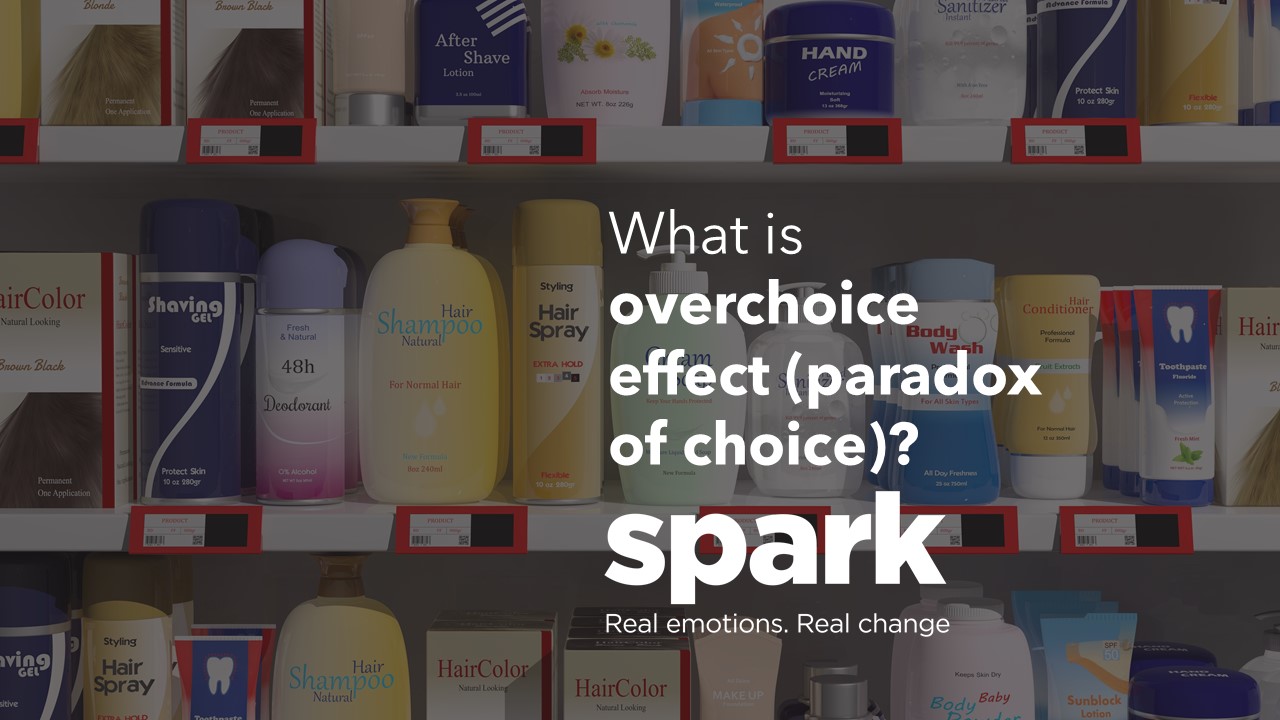When deciding on what to buy, we’re often met with a vast selection of products, whether it’s tins of beans, car interiors, or holiday destinations. Consumers and retailers will often claim that more choice is always better, but fundamentally the way you present that choice is far more important how many choices there are. In reality, the more choice you give someone, the less likely they are to purchase, or the more likely they are to make the wrong choice.. This is what’s known as the ‘overchoice effect’ or ‘paradox of choice’.
Psychological research has covered this topic extensively, with the most famous example being the Jam Study. In the experiment, shoppers were more likely to purchase from a smaller selection of jams than a larger selection. When we are met with too many choices, we experience ‘choice paralysis’, and abandon the decision all together.
This is due to the amount of mental effort needed, but also the build-up of anxieties related to making ‘the right choice’. Other research has also shown that when given more choices, we often feel less satisfied with our final choice, even if it was a good choice.
The key to combatting to choice overload is framing the amount of choice in a more concise way. If you have 30 different kinds of honey, group the thirty into three groups of ten, thus reducing the decision making into smaller chunks of products.
To learn more about the brain, please click here for more articles on why we behave as we do or get in touch with us here.






4 thoughts on “What is overchoice effect (paradox of choice)?”